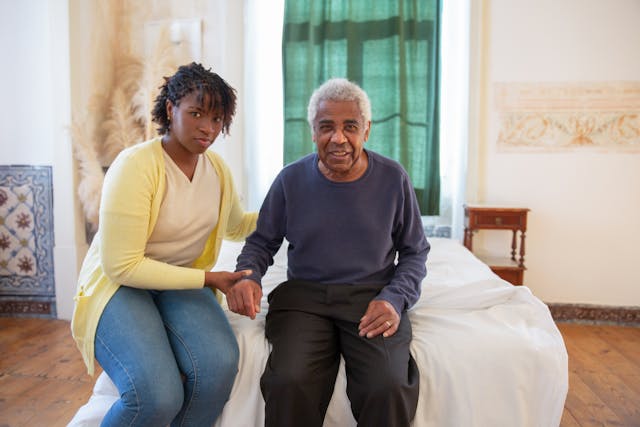
- Promote a well-balanced diet rich in nutrients to enhance muscle strength and bone health in older adults.
- Implement fall prevention strategies through home modifications and balance exercises to improve safety.
- Encourage social activities and community engagement to combat loneliness and support mental well-being.
- Ensure regular healthcare check-ups to monitor and address mobility-related health issues promptly.
As you age, you must prioritize your mobility to maintain independence and quality of life. Whether you’re a senior yourself or caring for an elderly loved one, incorporating simple strategies to improve and maintain mobility can make a world of difference. This blog will explore essential tips to help older adults stay active, mobile, and healthy.
Stay Active

Regular physical activity is crucial for maintaining mobility in older adults. Encourage daily exercises to help improve strength, flexibility, and balance. Some examples of low-impact exercises that are safe and beneficial for seniors include:
Tai Chi
Tai Chi is a gentle form of exercise focusing on slow, controlled movements and breathing techniques. It can improve balance, flexibility, and coordination while also reducing stress and anxiety. You can take online Tai Chi classes if you prefer to stay at home or if you’re unable to attend in-person classes. In these classes, you’ll learn a series of movements that you can practice on your own. You’ll also have the opportunity to connect with others who are also looking to improve their mobility.
Swimming
Swimming is a great, low-impact exercise that can help build strength and cardiovascular endurance. The buoyancy of water minimizes stress on joints. Many community centers offer senior swim classes or open swim times for seniors at a discounted rate. If you have access to a pool or live near a beach, consider taking a dip as often as possible.
Walking
Walking is a simple and accessible form of exercise that can be done almost anywhere. A regular walking routine can help improve balance, cardiovascular health, and overall mobility. It’s also a great way to socialize with friends or explore new places. If you have trouble walking long distances, start with shorter walks and gradually increase the distance as your strength and endurance improve.
Stretching Exercises

Stretching is essential for maintaining flexibility and preventing injuries. Incorporating stretching exercises into your daily routine can help improve joint mobility and muscle strength. Some simple stretches that seniors can do include neck rotations, shoulder rolls, and hamstring stretches. Make sure to stretch slowly and hold each stretch for at least 30 seconds to get the full benefit.
By staying active and incorporating these exercises into your routine, you can improve your mobility and maintain a healthy lifestyle as a senior. Remember to always listen to your body and consult with a healthcare professional before starting any new exercise program. With consistency and dedication, you’ll be on your way to better mobility in no time.
Maintain a Healthy Diet
A well-balanced diet plays a significant role in overall health and mobility. Ensure that older adults are getting enough nutrients like calcium, vitamin D, and protein to support muscle strength and bone health. Incorporate plenty of fruits, vegetables, whole grains, lean proteins, and healthy fats into their meals to promote overall well-being.
Practice Fall Prevention
Falls are a common concern for older adults and can have severe consequences for mobility. Take steps to prevent falls by removing tripping hazards in the home, installing grab bars in bathrooms and stairways, wearing proper footwear with good traction, and staying mindful of any medications that may cause dizziness or imbalance.
Stay Socially Connected
Loneliness and isolation can impact an individual’s physical health as well as mental well-being. Encourage older adults to stay socially connected by participating in community events, joining clubs or classes, volunteering their time, or simply spending time with friends and family members. Social engagement can help reduce stress levels and improve overall quality of life.
Regular Check-ups
Regular visits to healthcare providers are essential for monitoring any changes in mobility or overall health conditions. Be proactive about addressing any concerns related to pain or discomfort early on to prevent further complications down the road. Stay up-to-date on recommended screenings for conditions like osteoporosis or arthritis that may impact mobility.
Maintaining mobility in older adults is pivotal for fostering independence, enhancing quality of life, and ensuring their well-being. Older adults can significantly improve their mobility and overall health by adopting a well-rounded approach that includes a well-balanced diet, practicing fall prevention strategies, staying socially connected, and keeping up with regular health check-ups. It’s also essential for caregivers and family members to support and encourage these healthy habits. Remember, aging gracefully isn’t just about adding years to life but adding life to years.

